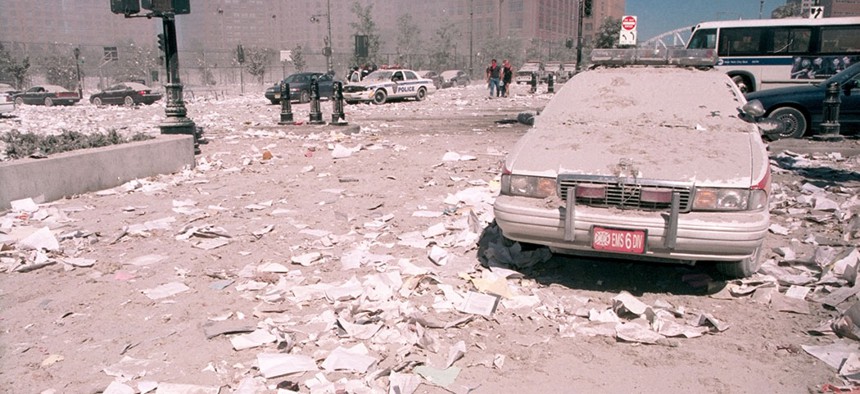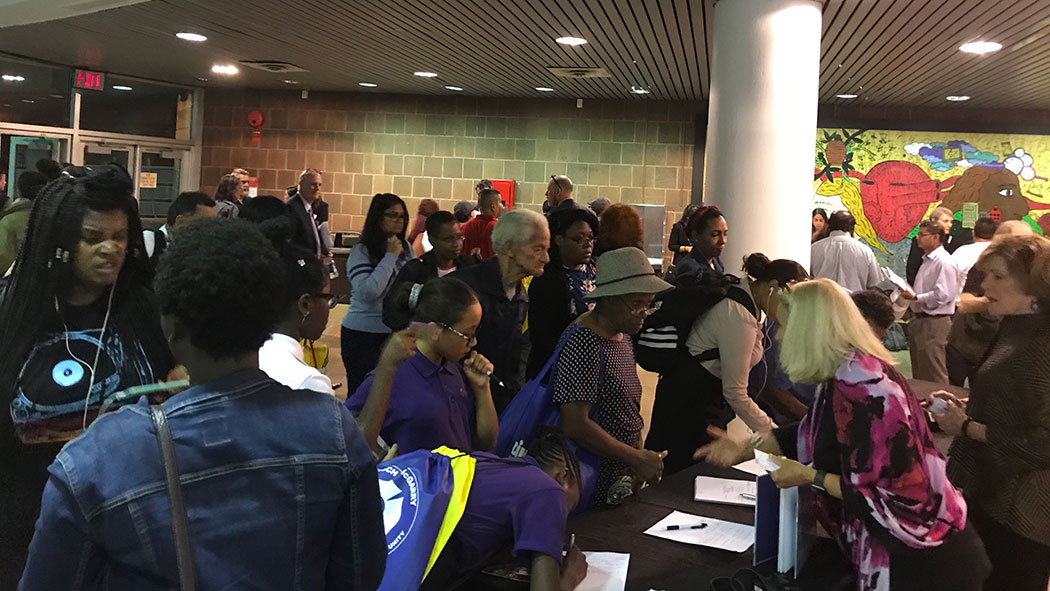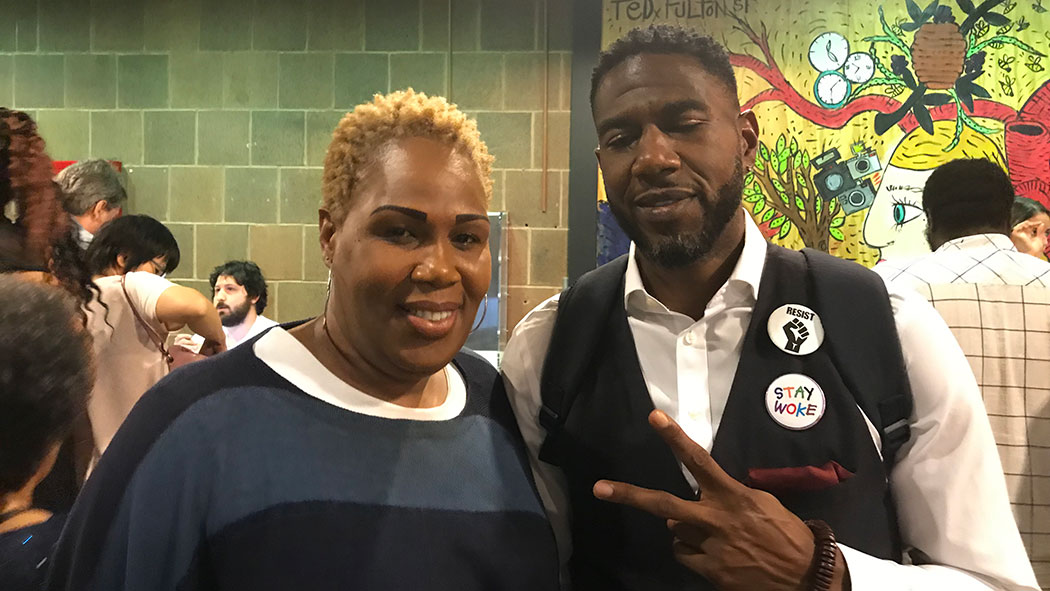New York City
NYC schools begin contacting 9/11 survivors about health risks
Students and teachers near ground zero were exposed to toxins. They’re only being told now.

Ash covers an emergency vehicle as it lies near the area known as Ground Zero, following the collapse of the Twin Towers. Anthony Correia/Shutterstock
Eighteen years after the attacks of Sept. 11, 2001, educational institutions near the World Trade Center are finally beginning to reach out to former students and teachers to apprise them of the health risks they face as survivors, and how they can get help if they need it. At a Sept. 16 forum sponsored by the Borough of Manhattan Community College and Barasch & McGarry, a law firm that specializes in 9/11-related claims, the New York City Department of Education announced a global outreach program to try to contact all of the former New York City public school students and staff who were potentially affected by the toxic World Trade Center dust.
In the many years since the World Trade Center attacks and the months of cleanup that followed, the public health emphasis has been on attending to first responders who worked at the toxic site. Tens of thousands of first responders have been diagnosed with health conditions and cancers linked to their World Trade Center exposure. Medical experts say that the post-9/11 death toll related to environmental contamination is approaching the number of people killed in the attacks.
As City & State recently reported, the exposure to toxins and trauma among New Yorkers who lived, worked or attended school nearby has been comparatively overlooked but continues to cause problems for thousands, including cancer and post-traumatic stress disorder. Now, after this year’s anniversary of the attacks, there were significant developments that signal an increasing focus on locating tens of thousands of former New York City public school children as well as college students who attended school near ground zero almost 20 years ago.
In the weeks after the twin towers collapsed, with assurance from then-Environmental Protection Agency Administrator Christine Todd Whitman that the air was safe to breathe, then-New York City Mayor Rudy Giuliani sent 20,000 public school children and 2,500 staff members into 29 schools in the area that had been contaminated with World Trade Center dust. That area, a 1.5-mile radius from ground zero, includes all of Manhattan south of Houston Street and portions of western Brooklyn. A subsequent investigation by the EPA inspector general found the agency “did not have sufficient data and analyses to make such a blanket statement.”
Similarly, the tens of thousands of college students and staff at the Borough of Manhattan Community College and Pace University, both in lower Manhattan, were exposed to the same World Trade Center dust.
The recent public announcement came after months of behind-the-scenes negotiations. At one point, the United Federation of Teachers, the union representing most New York City public school teachers, had sought a legislative intervention from the City Council to require Mayor Bill de Blasio’s administration to regularly report on its progress in notifying students, teachers and staffers about the health risks.
“I am here this evening to announce that with our partners in the United Federation of Teachers, we are launching an advocacy campaign in an effort to reach every single one of those 19,000 (students),” New York City schools Chancellor Richard Carranza said during the Sept. 16 forum.

The city Department of Education will mail out advisories with materials on the World Trade Center Health Program and the September 11th Victim Compensation Fund to every former student they locate. They plan to use social media targeted to reach former students “that live in all four corners of the country and the world,” Carranza said. “We are committed to not stopping until we reach every person and every single one of them signs up.”
A similar effort will be made to inform the 2,500 staff members who worked in the 29 schools located in the toxic zone.
United Federation of Teachers President Michael Mulgrew and Carranza also announced a joint Oct. 28 outreach event. “One week after 9/11, there were schools in the zone that were open, and we are talking about children in first grade coming back to school with a nice new backpack because we were told by the EPA that everything was fine,” Mulgrew said.
In the years since, 55,000 people have been diagnosed with a World Trade Center condition, with 35,000 of them with two or more certified conditions. More than 13,000 people have been diagnosed with at least one cancer, 10,038 of them being first responders and 3,992 people who lived, worked or went to school near the World Trade Center.
At a June congressional hearing, Dr. Jacqueline Moline, the director of the Northwell Health Queens World Trade Center Health Program, said it would not be long before the post-9/11 death toll from World Trade Center contamination would surpass the number of people killed in the attacks.
Under the World Trade Center Health Program, as established under the James Zadroga 9/11 Health and Compensation Act, roughly 90,000 designated first responders like police officers, firefighters and construction workers site were granted free annual health screenings and health care in the event they developed one of a dozen cancers and other ailments potentially related to exposure at or near ground zero.
In addition, some 400,000 people who lived, worked or attended school in the affected area are eligible to participate in the World Trade Center Health Program, but only if they are symptomatic.
While close to 85% of the first responders are enrolled in the World Trade Center Health Program, fewer than 25,000 other survivors have participated. “Many of us returned back to schools that had not been adequately cleaned,” said Lila Nordstrom, who on 9/11 was a senior at Stuyvesant High School, a few blocks north of the World Trade Center. “Many of us returned before the fires were out. The environment outside was being continually recontaminated by the trucks that were carrying the debris.”
Nordstrom started StuyHealth, a nonprofit advocacy group aimed at reaching other World Trade Center-adjacent students. She is a World Trade Center Health Program participant and gets free treatment for her asthma through the program, even though she now lives in California.
WTC-linked cancers and myriad other linked ailments have been documented in the former K-12 public school cohort that attended the affected schools. “There are a lot of health effects that are still with us and others that may manifest themselves later,” Moline said.

New York City Public Advocate Jumaane Williams was in attendance to support his sister, Jeanine Williams, who is now a nurse practitioner. She attended BMCC throughout the cleanup period and years later developed breast cancer. “This is all brand new to me,” she said during an interview. “I never connected the dots. I never knew until I got the letter (from BMCC) that the compensation program was open to non-first responders.”
“I am an elected official and I did not know,” Jumaane Williams said. “I am only here because she opened that envelope and shared it with me.”

NEXT STORY: On-demand helicopters prompt climate concerns
